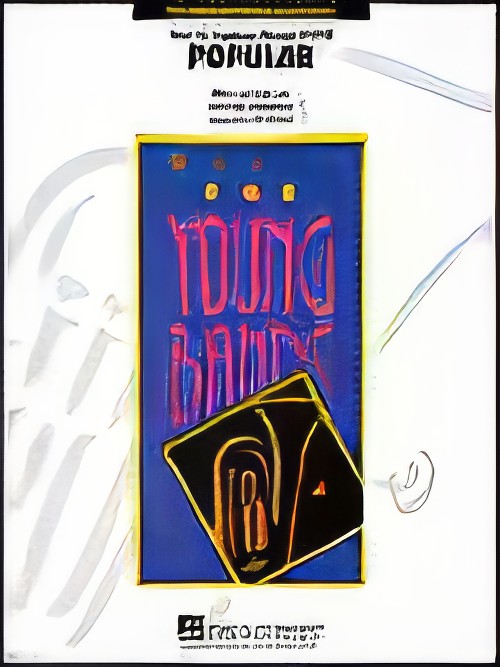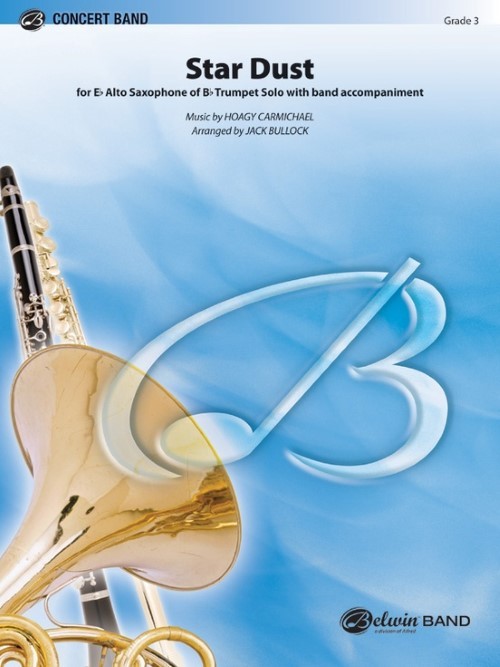Results
-
 £57.50
£57.50POPULAR (from Wicked) (Young Band) - Schwartz, Stephen - Bocook, Jay
From one of the most powerful and successful Broadway musicals in recent years, Stephen Schwartz's Wicked features a magnificent array of songs filled with grit and also humor. One of the show's high points is this upbeat and entertaining production number.
Estimated dispatch 7-14 working days
-
£54.99
Popular Airs of the Philippines - Ruiz
"Sampaguita Danza", "Filipino Vals", and "Aguinaldo's March"Note: This is a reprint from a vintage publication of 1900. No conductor score is published for this work. The Solo Cornet part serves as a conductor guide.Due to the era of this work, saxophone and double-reed parts are not published. Parts for Eb Horns are included; no F Horn parts are published for this work. If a C Piccolo/C Flute part was not published originally, one has been subsequently added by our editorial staff.
Estimated dispatch 7-14 working days
-
£59.30
Three Popular Classics
Estimated dispatch 7-14 working days
-
£65.99
The Popular Swing - Brooke
Estimated dispatch 7-14 working days
-
£89.99
Tune In A Popular London Style - Percy Aldridge Grainger
Estimated dispatch 7-14 working days
-
 £57.50
£57.50Popular (from Wicked) - Stephen Schwartz
From one of the most powerful and successful Broadway musicals in recent years, Stephen Schwartz's Wicked features a magnificent array of songs filled with grit and also humor. One of the show's high points is this upbeat andentertaining production number.
Estimated dispatch 7-14 working days
-
 £113.30
£113.30Moderate Dances - Angelo Sormani
This piece is a tribute to dance music, especially passionate, intense and meditative dance music. "Moderate Dances" is divided into three movements: a "Tango", a "Slow Waltz" and a "Bossa Nova". Each movement and each dance has its own particular characteristics but, when combined, these different rhythmic beats and times give the piece a feeling of completeness and uniformity. The Tango started to flourish in the suburbs of Buenos Aires in around 1880. There is still some doubt as to its origins, which may be Cuban (Habanera) but are probably African. It was most popular in Argentina and Brazil: here the male protagonist was originally the "gaucho" with his inseparable guitar, later to be replaced by the proud, elegant "compadre". By around 1910 the Tango had spread to Italy and France. New clubs opened, where the upper classes could watch and dance the Tango. Here the dance also underwent some rapid transformations. The exaggerated and extravagant gestures and body movements disappeared. Slow, gliding steps replaced the old rotational movements. The women's red ankle-boots and the partners "staring into each other's eyes" accentuated the erotic nature and sensuality of this dance. So much so that, in 1913, the German government banned soldiers from dancing the Tango. Those who broke the law were immediately discharged from the army. From a strictly musical perspective, the basic instruments were a flute, a harp (the diatonic harp typically played by the Indians of Paraguay) and a violin, or flute, guitar and violin or even clarinet, guitar and violin. These instruments were easy to transport, ideal for playing at parties, in the streets and in courtyards. The musicians played by ear, frequently improvising: there were no scores, no records, which is the main reason why it is impossible to trace the Tango back to its exact origins. However, the Tango's evolution (and growing popularity) was once again fostered by its fundamental ability to absorb "other" cultures, languages and sounds. And it was the arrival of the "bandoneon" (an accordion-like instrument that was invented in Germany and brought to Rio de la Plata by some immigrant), which replaced the flute, that marked the beginning of the Tango's huge success outside Argentina. A number of talented composers, above all the great Astor Piazzola (1921-1992), transformed the bandoneon from a simple accompanying instrument to a solo instrument that was to become the distinguishing feature of the 20th century Tango. The Slow Waltz originated from the Waltz, the typical dance of the Bavarian and Tyrolese peasants in the 1700s. It was composers like Johann Strauss, father and son, who carried the Waltz to its zenith in the 1800s, creating the sensual and melancholy yet joyful and charming dance we are all familiar with. When the Waltz first became popular in Germany, the members of respectable society were shocked at the closeness of the dancing partners, who had always previously danced apart. The main difference between the Waltz and Slow Waltz is that the latter has a slower, more expressive rhythm: the men wear tails and the women wear ball gowns decorated with beads and feathers and couples dance in graceful rotational movements. "Bossa Nova" is the title of the last movement in the piece. Jobim, the great Brazilian musician, described this musical genre as a combination of modern Jazz and Samba. Bossa Nova means "new wave". This was the name of the artistic and musical movement that evolved in Brazil in the late Fifties and was extremely popular throughout the Sixties. The songs are usually about love or social matters, drawing inspiration from the slums of Rio De Janeiro and the lives of their inhabitants. Bossa Nova, with its original compositions and the artistic talent of its musicians, also became hugely popular in the United States and Europe, and top Jazz musicians (Ella Fitzgerald, Stan Getz, Bob Cooper, Charlie Bird, Sonny Rollins, Dexter Gordon, Dizzy Gillespie) started to include Bossa in their repertoires.
Estimated dispatch 7-14 working days
-
£65.50
Offenback Back To Back - Jacques Offenbach
"[""Two of Offenbach's most popular works Barcarolle and the famous Can-Can are presented in a playable arrangement for developing bands. Bands can work on expressive lines in the Barcarolle and have lots of fun with the Can-Can. A perfect introduction to the music of this popular composer."",""Two of Offenbach's most popular works Barcarolle and the famous Can-Can are presented in a playable arrangement for developing bands. Bands can work on expressive lines in the Barcarolle and have lots of fun with the Can-Can. A perfect introduction to the music of this popular composer.""]"
Estimated dispatch 7-14 working days
-
£113.30
Rumanian Folk Dances - Béla Bartók
Bla Bartk (1888 - 1945) showed from the beginning of his career an interest in popular music. He began studying music at the age of five and eventually focused on composition and piano. He collected a lot of popular songs, especially during his studies in Hungary, but also music from Romania and Slovakia. This had a lot of influence on his style. In his compositions, Bartk uses many Hungarian popular themes and rhythms, and even his own original works always refer to the same rhythmic and melodic folk character. At the beginning of the twentieth century, Bartk detached himself from romanticism and began to delineate his style on harmonic procedures based on diminished and augmented intervals, on bitonality, and on marked percussiveness, characteristics that are at the core of popular music.The Romanian Dances are a collection of seven folk dances, originally composed for piano (1915, the first six) and then transcribed for a small symphonic orchestra (1917). Of purely modal language, like almost all Bartk's music, each dance comes from a different area of Romania (Stick Dance, Sash Dance, In One Spot, Horn Dance, Romanian Polka, Fast Dance of Belnyes, and Fast Dance of Nygra).
Estimated dispatch 7-14 working days
-
 £70.50
£70.50Star Dust (Alto Saxophone or Trumpet Solo with Concert Band - Score and Parts) - Carmichael, Hoagy - Bullock, Jack
The popular ballad Star Dust was written and recorded by Hoagy Carmichael and has been recorded by many popular music stars since it was published in 1929. Scored for alto saxophone or trumpet solo with concert band accompaniment, Jack Bullock's arrangement is appropriate for soloists from your band, or an advanced pro allowing a few more liberties and embellishments. A beautiful ballad, among the most popular songs ever published, this is a tremendous way to showcase your soloist. A charming concert addition!
Estimated dispatch 7-14 working days
